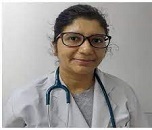Scientific Program
Keynote Session:
Oral Session 1:
- Current Trends in Medical and Nursing Practice | Evidence Based Clinical Practice| Public Health Nursing
Title: Infection Prevention and Control strategic framework
Biography:
Mumtaz Ali Khan has almost 20 years working experience in the field of clinical Pediatrics and Public Health. For last 10 years, he is working as Field Epidemiologist and Training coordinator at Field Epidemiology & Disease Surveillance Division, NIH Islamabad. He is having vast experience of outbreak investigation and response. He has represented Pakistan in more than 32 international conferences/meetings and presented 28 research papers in international conferences.
Abstract:
The emergence of COVID-19 pandemic in Pakistan since February 2020 uncovered huge limitation in the IPC knowledge and best practices of healthcare providers that requires refocused and accelerated efforts to strengthen health systems for implementing IPC interventions as an essential component of patient and health care worker safety.
Establishment of an IPC policy and strategy provides a framework to develop and implement guidelines and standard operating procedures (SOPs) to establish a culture of safety in healthcare facilities.
A strong health system, which includes a culture and infrastructure of IPC, will equip governments and communities to respond and manage outbreaks and prevent the spread of infectious diseases.
The Government of Pakistan through the Ministry of National Health Services Regulations & Coordination (NHSR&C) with technical support of WHO Country Office, Pakistan is working since 2018 for systematic implementation of IPC program based on the WHO Guidelines on Core Components of IPC at all levels of healthcare. Accordingly, formal notifications to establish the nation IPC unit, NIH were issued in 2018, series of capacity building trainings on IPC were conducted. First national guidelines IPC was published in April 2020 with a mandate to oversee the implementation and strengthening of IPC standards and practices in health facilities across Pakistan.
The strategic plan for IPC is divided into five objectives on defining IPC structures, availability of competent workforce, establishing monitoring & evaluation systems, promoting conducive environments for IPC in healthcare facilities & communities and implementing occupational safety along with assignment of responsibility, the timeline and M&E plan with indicators.
The strategic components of this plan have been drawn from JEE recommendations, AMR NAP (2017), National Guidelines IPC, the recent IPC assessments on WHO tools during HIV/AIDS outbreak (Larkana, Sindh) & COVID-19 pandemic.
Even thought, the Plan is comprehensive to allow for creation of an effective and functioning IPC system in Pakistan, with targets expected to be achieved in 3 years. It is strongly conditional to the commitment of IPC stakeholders, meaningful Government support and a strong synergy between the relevant sectors.
Title: knowledge and practices regarding Nosocomial infection among nurses in hospitals of Islamabad
Biography:
Muhammad Abdullah is a medical nursing student at Aga Khan university, Pakistan
Abstract:
Objectives: objectives of the study were to determine the level of knowledge and practices regarding Nosocomial infection among nurses working in public and private hospitals of Islamabad and to determine the factors associated with knowledge and practices among these nurses
Design: A cross sectional Study based on self-administered questionnaire was ducted.
Setting: Study was carried out in public and private tertiary teaching hospitals in Islamabad
Study participants: A sample of 356 nurses including 185 from public hospital and 171 from private hospital through stratified random sampling proportion to size for collecting information regarding knowledge and practices about Nosocomial infection was selected
Main outcome measures of the study were good and bad knowledge and practices regarding Nosocomial infection
Results: A total sample size was 356 participants was studied where 185(51%) nurses from public hospital and 171(48%) from private hospitals were included. Most of the participants, 212 (59.6%) were of age between 20-29 years. Among the participants 221(62.1%) were females and 135 (37.9%) were male staff. Regarding knowledge level, 194(54.5%) participants had good knowledge about Nosocomial infection and as far as practice is concerned, 204(45.5%) of the participants had good practices regarding Nosocomial infection.
Conclusion: Overall, the knowledge and practices of the nursing staff was good. Based on facility, knowledge of the private hospital was better as compare to knowledge of the participants of public hospital however, practice of the participants from public hospital was better as compare to the practice of the participants from private hospital
Title: Neonatal resuscitation
Biography:
Raktima Chakrabarti is a neonatologist and paediatrician in India. She is practising in Gurgaon, Haryana, India. She has done her medical graduation and post graduation in paediatrics from renowned universities of India and after that her carrier became enriched with the European university hospital’s experience in neonatology. Her expertise is in Neonatology and paediatrics and her main focus is the respiratory and gastrointestinal problems of newborns, specifically the preterm newborns. She has taken parts in multiple studies and published numerous research reports in eminent journals. She also authored multiple nenatology text books. She is in the reviewer panel of numbers of eminent pediatric journal.




